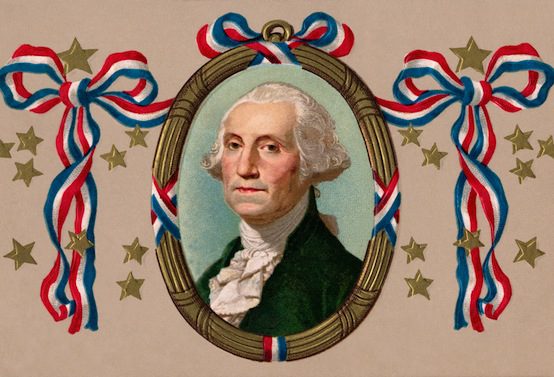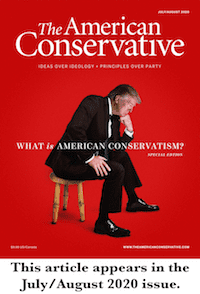George Washington: Our Beau Ideal Statesman, and Conservative

Before we can understand the nature of American conservatism and its relevance for today, we must first define what we mean by America and what we mean by conservatism. The latter is easier to explain, so let’s start with that.
Simply put, conservatism is the practice of conservation and cultivation. A conservative believes that each generation has a duty to conserve and cultivate the habits, traditions, ideas, and institutions within their nation that best promote virtue and ordered liberty.
Conservatism is not an ideology but a way of life and frame of mind.
It guards, protects, and stewards the treasures of the past with a view towards building, growing, and sustaining new things for the future. Conservatives use prudence to apply the lessons of history to their unique circumstances. They keep the fire of memory alive in an ephemeral world. Conservatism is the bulwark of civilization.
What is America? America has many facets. It’s a place, a people, a social compact, and a government. It has both a history and a personality. It is a nation.
America is located in the Western Hemisphere. It borders the Atlantic Ocean to the East and the Pacific Ocean to the West. It has two principal mountain ranges, the Appalachians and the Rockies. Its biggest rivers are the Missouri and the Mississippi, and it possesses the world’s largest body of fresh water: the Great Lakes.
America is diverse, yet there are four people groups that have shaped its history and culture in an outsized way: Native Americans, Anglo-Saxon Protestants, African Americans, and European, and later, Latin American Catholics.
The Constitution is the social compact that binds Americans together as citizens of the Union. Its purpose is to establish, ensure, promote, and secure the common good of its people as defined by the following objectives: Justice, Tranquility, Common Defense, General Welfare, and Liberty.
Throughout its history, the size and scope of American government has grown, largely because of three factors: war, technological innovation, and social justice. In each case, the power of the federal government expands in response to a crisis, real or perceived. Despite the best efforts of conservatives, the size of the government rarely ever snaps back to pre-crisis levels once a crisis is addressed. Sometimes Americans like these extra-constitutional expansions and ratify them at the ballot box and other times they elect men to dismantle the centralizing apparatus. Case in point, both Franklin D. Roosevelt and Ronald Reagan were two of the most popular presidents in the 20th century.
Such periods of expansion and contraction shape our national character and become part of an unwritten constitution that sets expectations about the limits of government in the future. The government, however, is not the only power exerting influence on the nation.
While Americans prize equality, there have been many elite classes throughout its history, some more virtuous than others, that set standards for the populace. Today the course of our nation is largely determined by technology titans in Silicon Valley, film producers in Hollywood, finance executives on Wall Street, Ivy League academics and foundation directors, and bureaucrats and journalists in Washington, D.C. Many Americans rightly distrust these institutions, which has led to populist uprisings on the nationalist Right and progressive Left. Nevertheless, the power of the establishment holds, for now.
By nature, Americans are optimistic, entrepreneurial, religious, impatient, distracted, and jumpy. They believe they are exceptional, think God is on their side, and attribute the hand of Providence to their actions, individual or collective. They are a powerful force.
Like it or not, this is the stuff of America.
What is American conservatism? In the 20th century it was principally an intellectual and political reaction against collectivism, whether it be the New Deal at home or the Soviet Union abroad. That tradition is necessary, but not sufficient for understanding the nature of American conservatism today.
In 2020, the first task of conservatives is to take stock of the country as it is, not as they imagine it to be. This includes the full scope of its history, geography, and traditions as outlined above. Secondly, conservatives should determine what needs to be conserved and cultivated, and what must be pruned or uprooted. This determination should be made not primarily on account of theory but in response to concrete circumstances, often presented as opportunities and threats.
The Declaration and Constitution are helpful and authoritative guides, but the practical wisdom of American statesman is more instructive, as the former tell us the why and what, but not the how. Let us take George Washington as our beau ideal of a statesman. Throughout the course of his presidency, his speeches highlight four areas worthy of conservation and cultivation for American conservatives today:
Culture: “Of all the dispositions and habits which lead to political prosperity, religion and morality are indispensable supports.”
Political Economy: “Their safety and interest require that they should promote such manufactories as tend to render them independent of others for essential, particularly military, supplies.”
National Defense: “Avoid the necessity of those overgrown military establishments which, under any form of government, are inauspicious to liberty, and which are to be regarded as particularly hostile to republican liberty.”
American Unity: “Properly estimate the immense value of your national union to your collective and individual happiness…accustoming yourselves to think and speak of it as of the palladium of your political safety and prosperity;…and indignantly frowning upon the first dawning of every attempt to alienate any portion of our country from the rest, or to enfeeble the sacred ties which now link together the various parts.”
Conservatives like to fight over three-legged stools. As soon as they are built, one leg seems to buckle. Not this time. 
The father of our country left us with three timeless legs and a seat to hold it all together: 1) social conservatism; 2) economic patriotism; 3) foreign policy realism; and a strong but limited federal government that binds all citizens—both middle-Americans and coastal elites—to the Union.
This is the American conservatism of our founding. This is the American conservatism that made our country great. And this is the American conservatism that our country needs today.
Related: Introducing the TAC Symposium: What Is American Conservatism?
Comments